The photographers shaping the way we see modern civilisation
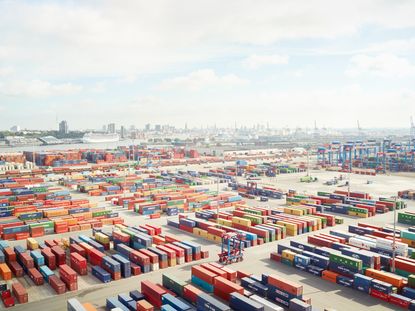
Civilisation: the latest behemoth subject to be tackled by Thames & Hudson. No mean feat for a publishing house that has already this year investigated a photographic history of China, and a wedge-like history of space exploration. Big subjects, it seems, are popular coffee table-toppers of late. Part a Who’s Who handbook for the photographically astute, part documentary of everything, Civilization: The Way We Live Now is as epic as it sounds (in the traditional sense of the word). The 352 pages zing with 500 photographs, many previously unpublished, from 140 leading photographers from far-flung corners.
Few have successfully attempted a photography project with such scope since Edward Steichen’s 1955 MoMA exhibition. ‘Family of Man’ brought together hundreds of images by photographers working around the world in a forthright declaration of global solidarity in the decade following the Second World War. ‘Since then, curators have been less at ease with sweeping overviews,’ write Todd Brandow and Bartomeu Marí in the foreword of Civilization. Perhaps we've become too detail-obsessed in our minutiae-focused, Google-everything world; too divided and oppositional. ‘Photographers are at work everywhere, looking at everything. Why not step back and try and take in the big picture?’

The Mare Nostrum supercomputer at Barcelona Supercomputer Center, 2006, by Simon Norfolk. © The artist
Rather than the meandering, overwhelming story that Civilization could tell, authors William E Ewing and Holly Roussell have managed to keep things markedly orderly, through eight thematic, signposting chapters. They’re called things like ‘Hive’, a chapter that captures the buzzing insect colony of today's cities through the dizzying human seas of Cyril Porchet, and the vast urban markets of Massimo Vitali. Or ‘Alonetogether’, which presents the human as a social animal, through portraits of friend groups, faith gatherings, sports teams; while alluding to the lonely corners of society, in the pitfalls of tech-induced isolation, as in Evan Baden’s selfie-culture portrait series Technically Intimate (2010).
Through clinical capturings of health facilities by Reiner Riedler, and scientific shots of space centres by Vincent Fournier, ‘Next’ (the final chapter), visually embodies the invention, fear, and pure fantasy of looking into the future. The chapter answers not only The Way We Live Now, but ponders at the way we will live tomorrow. ‘Sometimes with all the breathless talk, it seems “next” has arrived – and it's already old hat,’ write Ewing and Roussell. ‘We’ve dropped the old question, what’s new, pretty much, simply because the newness has become so routine.’ History and futureollide in Simon Norfolk’s photograph of the Mare Nostrum at the Barcelona Supercomputer Center, built in the nave of an old church to help with its cooling; a piercing metaphor of our worship-like relationship with technology.
Bolstered on each page by musings direct from the mouths of those who made the work, we’re reminded of the human at the other side of the camera, the individuals caught up within civilisation as a whole. In a chapter called ‘Control’, Edgar Martins writes, ‘To photograph is to collect the world.’ It’s also to preserve it. Rather than a mesh of mismatched, disconnected scenes, Civilization becomes a global family photo album; a memory book of personal stories that patchwork to form a rounded impression of humanity. Our advice? Send this book into space as a visual capsule of life on our planet today (though it might scare any prospective Earth-dwellers off).
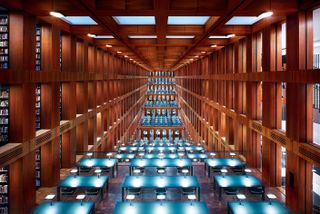
Humboldt University Library I Berlin, 2014, by Luca Zanier, from the series Corridors of Power. © The artist
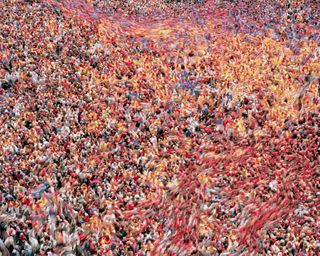
Untitled, 2014, by Cyril Porchet, from the series Crowd. © The artist

Square apple, 2013, by Robert Zhao Renhui, from the series A Guide to the Flora and Fauna of the World. Sold in a department store in South Korea, these square apples were created as gifts for students taking the College Scholastic Ability Test, with some inscribed with the words ‘pass’ or ‘success’. A similar square watermelon was developed in Japan in the 1980s. The cubic fruits are created by stunting their growth in glass cubes. © The artist
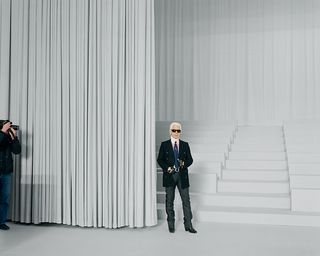
Grand Palais, 2007, by Alec Soth, from the series Paris / Minnesota. © The artist and Magnum Photos
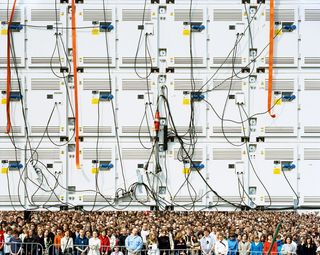
The funeral of Pope John Paul II broadcast live from the Vatican. Warsaw, Poland, 2005, by Mark Power, from the series The Sound of Two Songs. © The artist and Magnum Photos
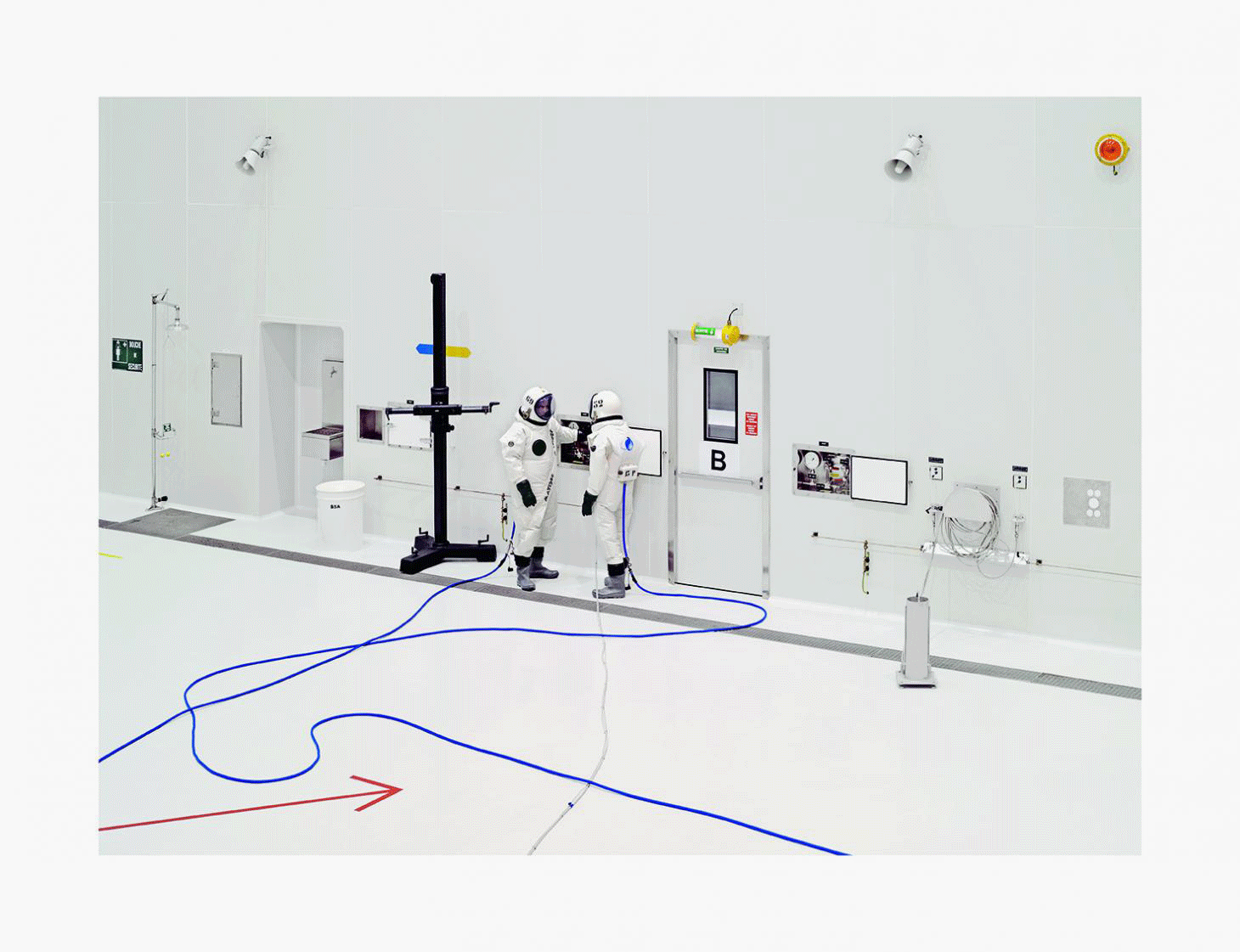
Ergol #3 S1B clean room, Arianespace, Guiana Space Center [CGS], Kourou, French Guiana, 2011, by Vincent Fournier, from the series Space Project. © The artist
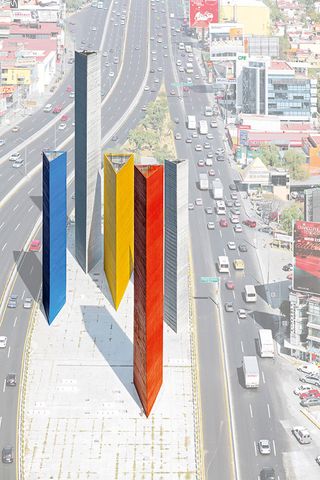
site specific_MEXICO CITY 11, 2011, by Olivo Barbieri. © The artist
INFORMATION
Civilization: The Way We Live Now, £39.95, published by Thames & Hudson. Flowers Gallery in London will show a selection of work by photographers featured in the book from 7 November – 22 December at its Kingsland Road venue
Wallpaper* Newsletter
Receive our daily digest of inspiration, escapism and design stories from around the world direct to your inbox
Elly Parsons is the Digital Editor of Wallpaper*, where she oversees Wallpaper.com and its social platforms. She has been with the brand since 2015 in various roles, spending time as digital writer – specialising in art, technology and contemporary culture – and as deputy digital editor. She was shortlisted for a PPA Award in 2017, has written extensively for many publications, and has contributed to three books. She is a guest lecturer in digital journalism at Goldsmiths University, London, where she also holds a masters degree in creative writing. Now, her main areas of expertise include content strategy, audience engagement, and social media.
-
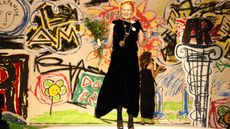 Vivienne Westwood’s personal wardrobe goes up for sale in landmark Christie’s auction
Vivienne Westwood’s personal wardrobe goes up for sale in landmark Christie’s auctionThe proceeds of ’Vivienne Westwood: The Personal Collection’, running this June, will go to the charitable causes she championed during her lifetime
By Jack Moss Published
-
 Montblanc’s leather goods evolution offers peak style
Montblanc’s leather goods evolution offers peak styleMontblanc takes design inspiration from its iconic writing archive for new collections of leather goods
By Simon Mills Published
-
 Ray Phoenix to rise in Arizona
Ray Phoenix to rise in ArizonaRay Phoenix housing project launches, designed by Johnston Marklee, who worked with Lamar Johnson Collaborative and artist Alex Israel, for property experts Ray and Vela
By Ellie Stathaki Published
-
 ‘Package Holiday 1968-1985’: a very British love affair in pictures
‘Package Holiday 1968-1985’: a very British love affair in pictures‘Package Holiday’ recalls tans, table tennis and Technicolor in Trevor Clark’s wistful snaps of sun-seeking Brits
By Caragh McKay Published
-
 ‘Art Exposed’: Julian Spalding on everything that’s wrong with the art world
‘Art Exposed’: Julian Spalding on everything that’s wrong with the art worldIn ‘Art Exposed’, Julian Spalding draws on his 40 years in the art world – as a museum director, curator, and critic – for his series of essays
By Alfred Tong Published
-
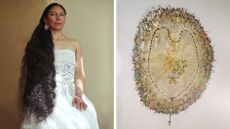 Marisol Mendez's ‘Madre’ unpicks the woven threads of Bolivian womanhood
Marisol Mendez's ‘Madre’ unpicks the woven threads of Bolivian womanhoodFrom ancestry to protest, how Marisol Mendez’s 'Madre' is rewriting the narrative of Bolivian womanhood
By Sofia de la Cruz Published
-
 Photo book explores the messy, magical mundanity of new motherhood
Photo book explores the messy, magical mundanity of new motherhood‘Sorry I Gave Birth I Disappeared But Now I’m Back’ by photographer Andi Galdi Vinko explores new motherhood in all its messy, beautiful reality
By Hannah Silver Published
-
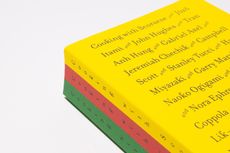 Best contemporary art books: a guide for 2023
Best contemporary art books: a guide for 2023From maverick memoirs to topical tomes, turn over a new leaf with the Wallpaper* arts desk’s pick of new releases and all-time favourite art books
By Harriet Lloyd-Smith Published
-
 The best photography books for your coffee table
The best photography books for your coffee tableFlick through, mull over and deep-dive into the best photography books on the market, from our shelves to you
By Sophie Gladstone Published
-
 Behind the scenes of Stanley Kubrick’s The Shining: new book charts the making of a horror icon
Behind the scenes of Stanley Kubrick’s The Shining: new book charts the making of a horror iconPublished in February 2023 by Taschen, a new collector's book will go behind the scenes of Stanley Kubrick’s The Shining, charting the unseen making of a film that defined the horror genre
By Harriet Lloyd-Smith Published
-
 Brad Walls’ aerial view transforms pools into artwork
Brad Walls’ aerial view transforms pools into artworkAerial photographer Brad Walls provides a crisp conclusion to the summer months with new book Pools From Above – you’ll want to dive right in
By Martha Elliott Last updated